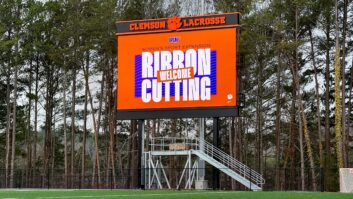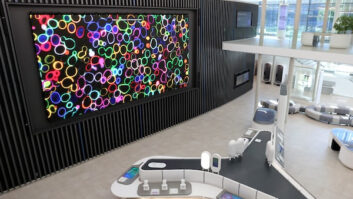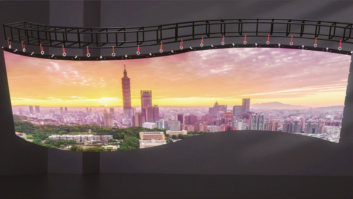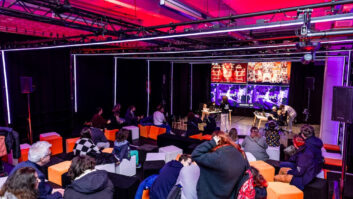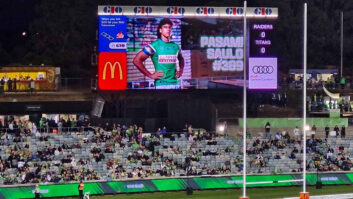Oxford University’s world-famous Bodleian Libraries chose a custom LED video wall from Leyard Europe as the main display in the public area, or loggia, of the Weston Library, home to the library service’s special collections. Treasures include a copy of the Magna Carta, a book given by a young Elizabeth 1 to her mother Katherine Parr, a collection of Florence Nightingale’s letters, and the handwritten manuscript of Mary Shelley’s Frankenstein.
The Leyard Europe TVF LED video wall was delivered to replace an existing LCD video wall installed pre-pandemic. The Leyard installation was part of a major building-wide AV refresh, designed by AV consultants, Hewshott and installed by Reflex, part of Aura. Leyard Europe was selected through an early process, consisting of comparison between five different LED brands.
 The Leyard video wall serves as the main display in the loggia, a large and light space open to the public, linking to a café and shop. The library contains exhibition spaces and a lecture theatre, reading rooms, seminar rooms and other study spaces.
The Leyard video wall serves as the main display in the loggia, a large and light space open to the public, linking to a café and shop. The library contains exhibition spaces and a lecture theatre, reading rooms, seminar rooms and other study spaces.
Installed flush in a marble recess, the video wall displays digital signage content, but is also used for presentations, external events, and to stream overflow content from the lecture theatre. This was a key requirement for the Library, which regularly welcomes high-profile speakers.
The installation posed challenges, namely the size and shape of the existing marble recess and the distance between the video wall and the AV rack delivering the video.
Because of the marble recess’ dimensions, the team faced a choice, AV consultant Daniel Brooks explains, between a standard aspect ratio video wall that was smaller than the space, which would look strange with considerable gaps on either side, or a custom video wall that fitted the recess, but would require bespoke content or “windows” provided within the video wall processing to accommodate content with a regular aspect ratio.
They opted for the latter for its better aesthetics, with a custom screen with extended trim designed to fill the remaining gaps, provided by Leyard Europe. Its bespoke content is created to the video wall’s specific size by a dedicated internal team.
Delivering content to the video wall was another challenge, Brooks said. The rack containing the AV equipment sits in a communications room located below the tiered seating of the lecture theatre, giving the team a difficult cable route to navigate. There were also some initial network issues to work through, hindering effective communication between the AV devices.
Brooks said: “The wall best met the client requirements, providing both quality and value and, thanks to Leyard’s European manufacturing facility, faster delivery than competitors. This benefitted the project timeline and reduced the environmental impact of international shipping.”
The LED video wall has been installed in the main public area of the Weston Library, one of the 26 libraries that comprise Bodleian Libraries, the UK’s largest academic library service, which supports the University of Oxford. Over its 400-year history, Bodleian Libraries has collected more than 13 million printed publications and 80,000 e-journals. Its extensive special collections include 1.4 million rare books, manuscripts, maps and other printed items, all housed at the Weston Library.
Formerly the New Bodleian, the Weston Library was designed in the 1940s, primarily for book storage, by architect Giles Gilbert Scott who designed Liverpool Cathedral, Battersea Power Station and also the iconic red telephone box. It was renamed following an £80m redevelopment by architects Wilkinson Eyre, which focused on providing state-of-the art storage and conservation of the special collections, 21st century methods of working and study and wider public access to the collections’ treasures through exhibitions and events.
Brooks concluded: “Working closely with the Bodleian’s property team, we helped to ensure that the supporting wall was built out correctly and that the video wall itself was provided with both the correct power and ventilation requirements.”

